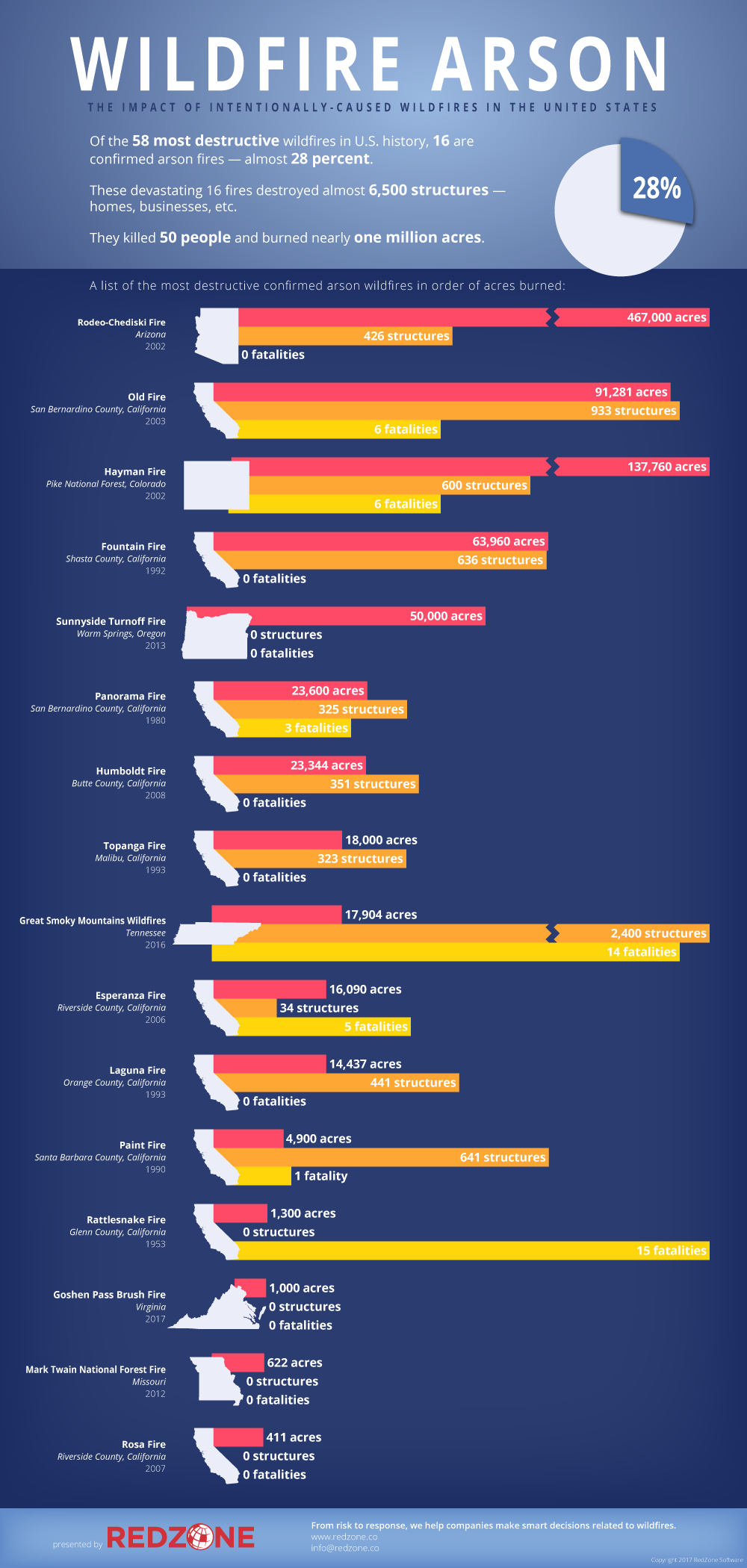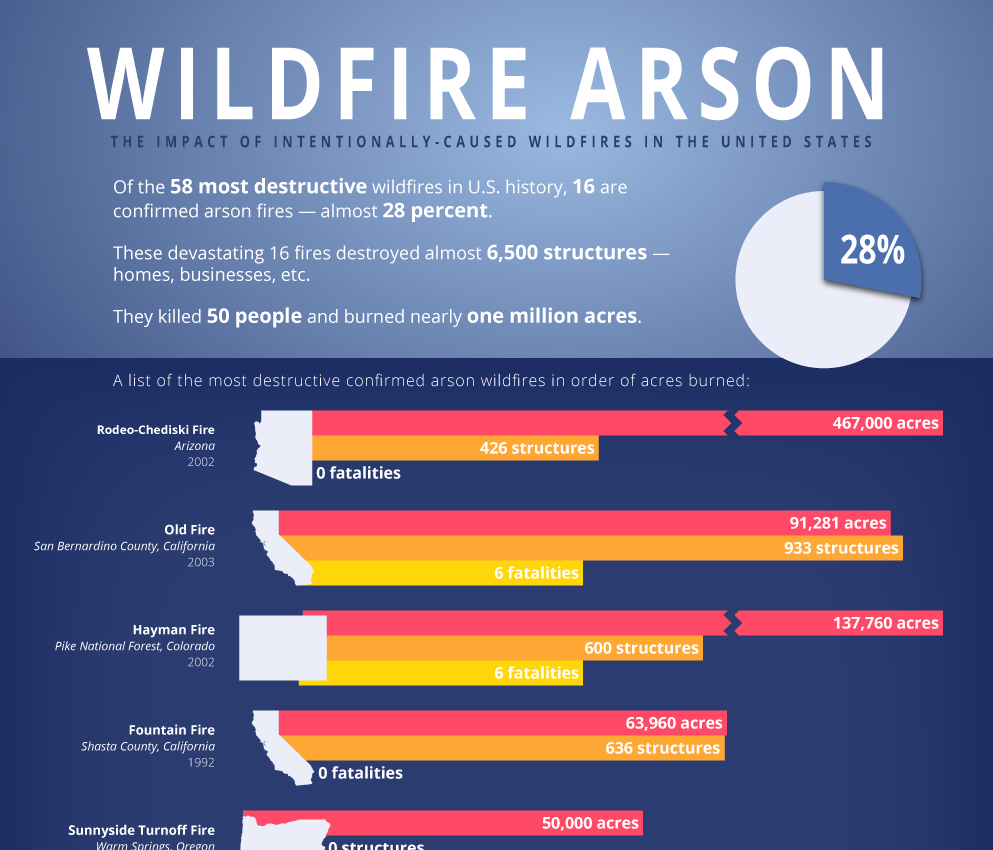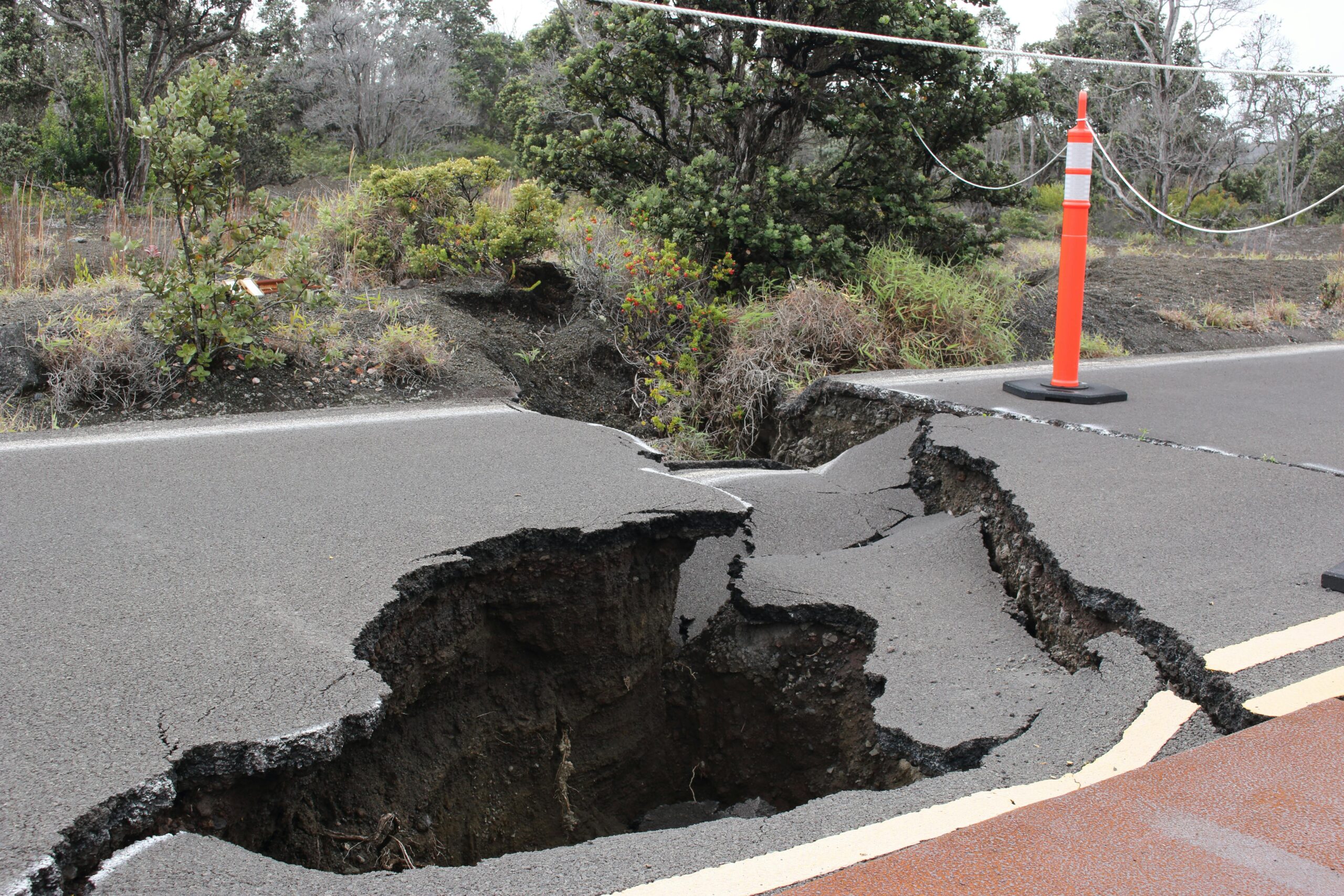Wildfire arson is the felony act of maliciously setting fire to wildlands or uncultivated land comprised of forest, brush or grassland, according to the U.S. Fire Administration. Not only does wildfire arson destroy natural lands, but it devastates a significant number of buildings, homes and other property — in addition to taking lives of firefighters and residents.
Needless to say, wildfire arson is no small threat — six of the 20 most damaging wildfires in California (in terms of structures destroyed) were caused by arson. Georgia records an average of 700 arson fires destroying over 9,000 acres annually. And, over 240 wildfires were caused by arson in Florida between Jan. 1 and April 14, 2017 — up 70 percent from the year before.
Of the 58 most destructive wildfires in U.S. history, 16 are confirmed arson fires — almost 28 percent. These devastating 16 fires destroyed almost 6,500 structures — homes, businesses, etc. They killed 50 people and burned nearly one million acres. Here are the most destructive confirmed arson fires (intentionally caused) in order of acres burned:

Rodeo-Chediski Fire, Arizona (2002): 467,000 acres, 426 structures
Old Fire, San Bernardino County, California (2003): 91,281 acres, 933 structures, 6 fatalities
Hayman Fire, Pike National Forest, Colorado (2002): 137,760 acres, 600 structures, 6 fatalities
Fountain Fire, California (1992): 63,960 acres, 636 structures
Sunnyside Turnoff Fire, Warm Springs, Oregon (2013): 50,000 acres
Panorama Fire, California (1980): 23,600 acres, 325 structures, 3 fatalities
Humboldt Fire, California (2008): 23,344 acres, 351 structures
Tompanga Fire, California (1993): 18,000 acres, 323 structures
Great Smoky Mountains Wildfires, Tennessee (2016): 17,904 acres, 2400 structures, 14 fatalities
Esperanza Fire, California (2006): 16,090 acres, 34 homes, five fatalities
Laguna Fire, California (1993): 14,437 acres, 441 structures
Paint Fire, California (1990): 4,900 acres, 641 structures, one fatality
Rattlesnake Fire, California (1953): 1,300 acres, 15 fatalities
Goshen Pass Brush Fire, Virginia (2017): 1,000 acres
Mark Twain National Forest, Missouri (2012): 622 acres
Rosa Fire, Riverside County, California (2007): 411 acres
Besides these cases of confirmed wildland arson, many other wildfires are still under investigation. Convicted arsonists face prison time, fines and even murder charges when lives are lost in the fire. No acts of arson are taken lightly — even a small-scale brush fire can take down homes and put lives in danger.
Not all human-caused wildfires are intentional. Between arson and careless mistakes, humans cause 84 percent of all wildfires throughout the United States and 44 percent of total area burned. In U.S. National Parks, 60 percent of fires are caused by humans, often from poorly extinguished campfires. Fire ecologist Jennifer Balch at University of Colorado – Boulder says that humans extend the U.S. wildfire season by three months.
National Arson Awareness Week 2017 is May 7-13. This year’s theme is “Prevent Wildfire Arson — Spread the Facts, Not the Fire.” Learn more about National Wildfire Awareness Week here.
Whether started by arson, lightning or human carelessness, wildfires quickly destroy both land and structures and put lives in danger. Understand the threat of wildfires for your properties with RZRisk.





2 Comments